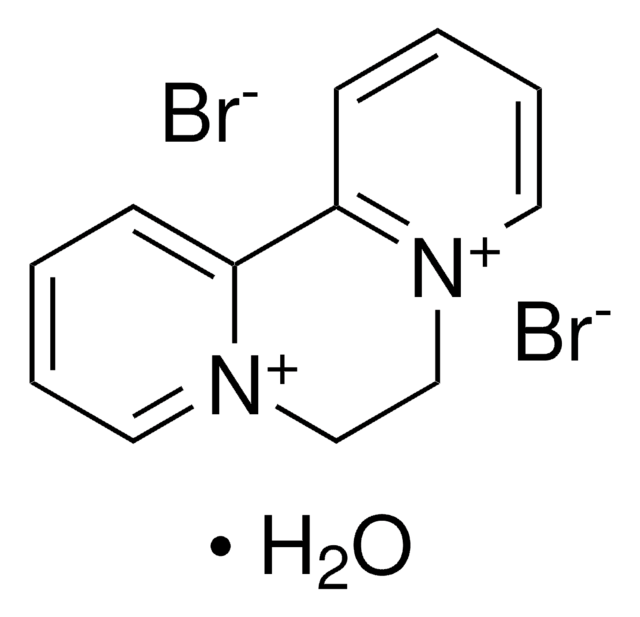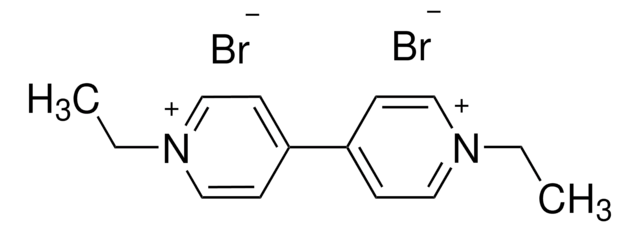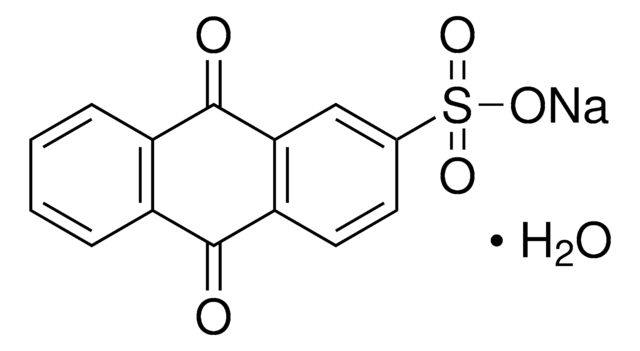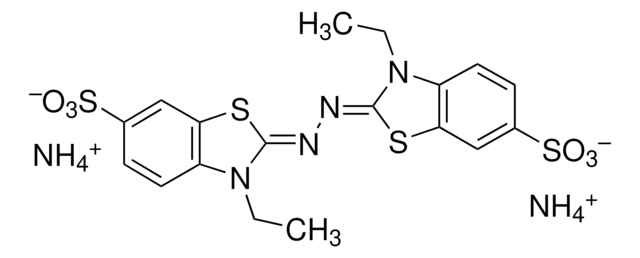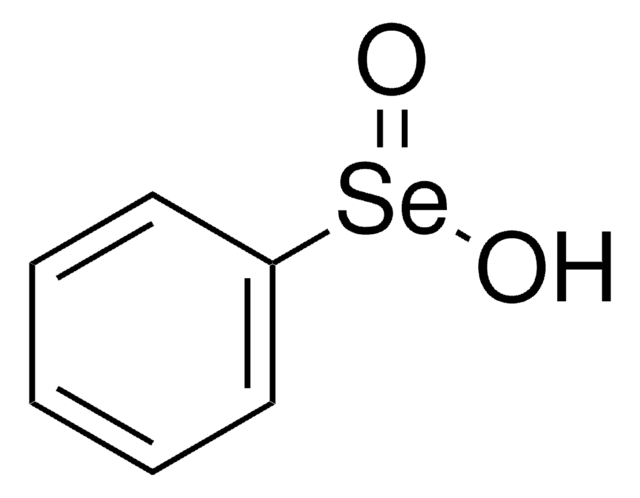856177
Methyl viologen dichloride hydrate
98%
Synonym(s):
1,1′-Dimethyl-4,4′-bipyridinium dichloride, Gramoxone, Paraquat dichloride
About This Item
Recommended Products
Quality Level
Assay
98%
form
solid
mp
>300 °C (lit.)
SMILES string
[Cl-].[Cl-].[H]O[H].C[n+]1ccc(cc1)-c2cc[n+](C)cc2
InChI
1S/C12H14N2.2ClH.H2O/c1-13-7-3-11(4-8-13)12-5-9-14(2)10-6-12;;;/h3-10H,1-2H3;2*1H;1H2/q+2;;;/p-2
InChI key
RLGVBTFWTZJYIL-UHFFFAOYSA-L
Related Categories
General description
Application
It can also be used as a mediator in the synthesis of ultrasmall bimetallic PdAg nanocatalysts.
Signal Word
Danger
Hazard Statements
Precautionary Statements
Hazard Classifications
Acute Tox. 2 Dermal - Acute Tox. 2 Inhalation - Acute Tox. 3 Oral - Aquatic Acute 1 - Aquatic Chronic 1 - Eye Irrit. 2 - Skin Irrit. 2 - STOT RE 1 - STOT SE 3
Target Organs
Respiratory system
Storage Class Code
6.1A - Combustible acute toxic Cat. 1 and 2 / very toxic hazardous materials
WGK
WGK 3
Flash Point(F)
Not applicable
Flash Point(C)
Not applicable
Personal Protective Equipment
Regulatory Listings
Regulatory Listings are mainly provided for chemical products. Only limited information can be provided here for non-chemical products. No entry means none of the components are listed. It is the user’s obligation to ensure the safe and legal use of the product.
PDSCL
Poisonous substance
PRTR
Class I Designated Chemical Substances
ISHL Indicated Name
Substances Subject to be Indicated Names
ISHL Notified Names
Substances Subject to be Notified Names
JAN Code
856177-500G:
856177-BULK:
856177-5G:
856177-1KG:
856177-1G:4548173181363
856177-VAR:
856177-250MG:4548173181370
Choose from one of the most recent versions:
Already Own This Product?
Find documentation for the products that you have recently purchased in the Document Library.
Articles
Light-Emitting Polymers
Graphene has emerged as the new wonder material. Being only one atom thick and composed of carbon atoms arranged in a hexagonal honeycomb lattice structure, the interest in this material has exploded exponentially since 2004 when it was first isolated and identified using a very simple method.
Global Trade Item Number
| SKU | GTIN |
|---|---|
| 856177-1G | 4061835563982 |
| 856177-250MG | 4061835571949 |
Our team of scientists has experience in all areas of research including Life Science, Material Science, Chemical Synthesis, Chromatography, Analytical and many others.
Contact Technical Service

